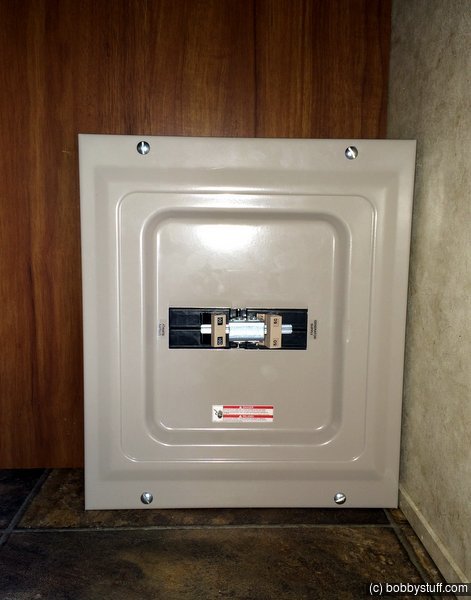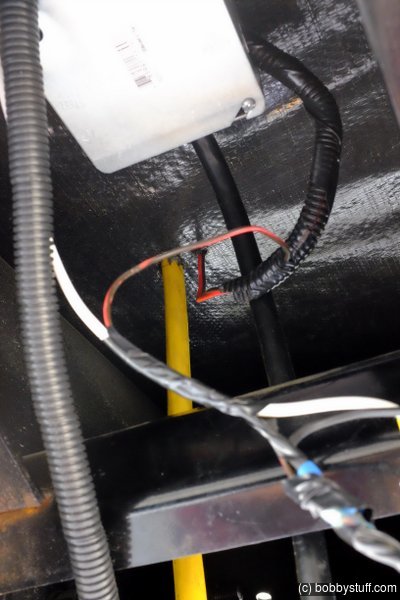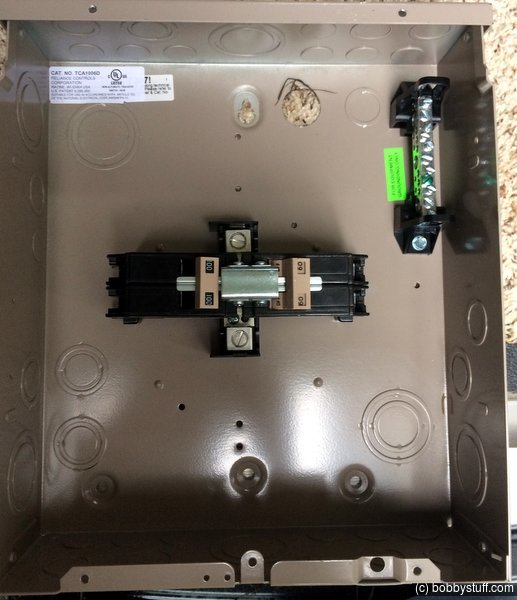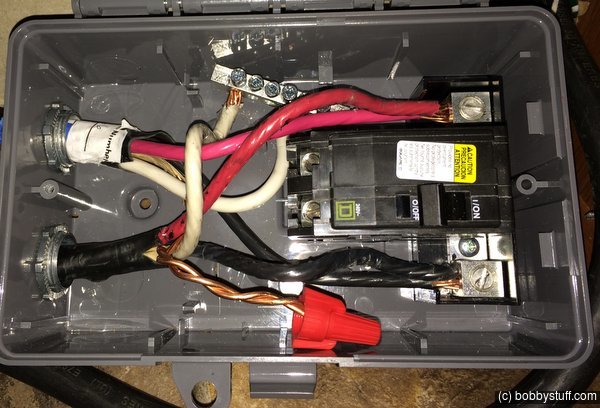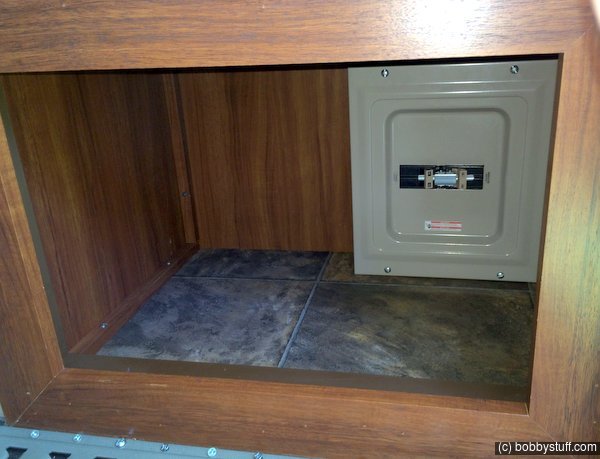Generator Wiring and Power Transfer Switch
I have a Honda EU3000 generator that I love. When traveling across country we sometimes just need to put some miles behind us for 3-4 days. With the Honda we can stay in Wal-Marts or truck stops for quick overnight stays while having the comfort of air conditioning and TV. During the hot months I also run the air conditioner in the RV while on the road. On my 2002 Wildcat I went with a low tech solution for powering the camper from the Honda. Read about that solution here and see how I enclose the Honda in the back of my truck here.
In the 2012 Copper Canyon I installed an automatic transfer switch. That switch was made by Progressive Dynamics and worked very well so I ordered the Progressive Dynamics PD52 automatic transfer switch for the 2014 SRX. The SRX has 50 amp service and the PD52 is designed for 50 amp RV systems.
I ran 10 gauge wire for my generator from the kingpin area of the SRX to the power center in the kitchen area. See the photos below for details of routing this wire. I installed the PD52 under the sink. The shore power 50 amp wire had enough slack to reach the PD52 under the sink. I purchased about 6 feet of 3 conductor with ground 6 gauge wire from Lowes to run from the PD52 back to the power center.
The install went fine but there were two problems immediately. The 30 amp switch I put in the 2012 Copper Canyon was only energized when the generator was running. Without generator power, the relay was not energized and connected shore power to the RV.
The PD52 is energized in both states. I don't know why. It may have to do with switching 3 conductors or maybe the force required to make a good solid contact when transferring 50 amps per contact. But the thing made a humming noise all the time that was very irritating. Had I been able to mount it outside in the front storage area, it might have been tolerable. However that was going to require some more serious 6 gauge wire routing and I still was not sure the hum would not be audible in the bedroom area.
Then there was another problem. The PD52 has a low voltage sensor on the generator side. When switching on the air conditioner while running the generator, the generator struggles for a fraction of a second to get up to speed. The voltage would drop and the PD52 sensor would disengage the generator. After a few seconds delay the PD52 would connect the generator again. The Honda would drop voltage for a fraction of a second and the PD52 would disengage again.
The 30 amp switch I had in the 2012 Copper Canyon never had this problem so this was a complete surprise to me. I thought about installing hard start capacitors in the two air conditioners but I still was not sure that would solve my problem. And I still had the humming problem.
So after much research I purchased and installed a Reliance Controls TCS1006D manual transfer switch. This is basically two mechanically linked double pole circuit breakers that works like the PD52 but without the relays. I am very pleased with the switch and confident it will never cause me any problems.
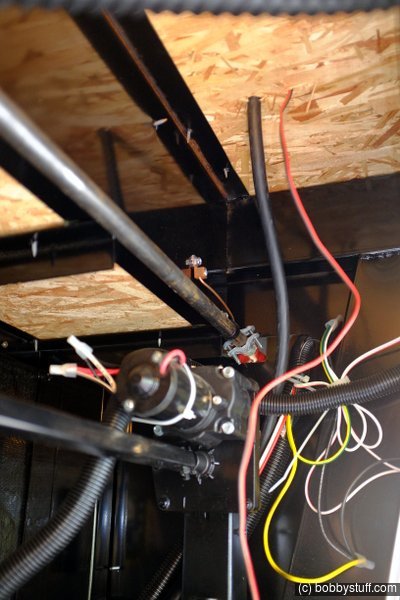
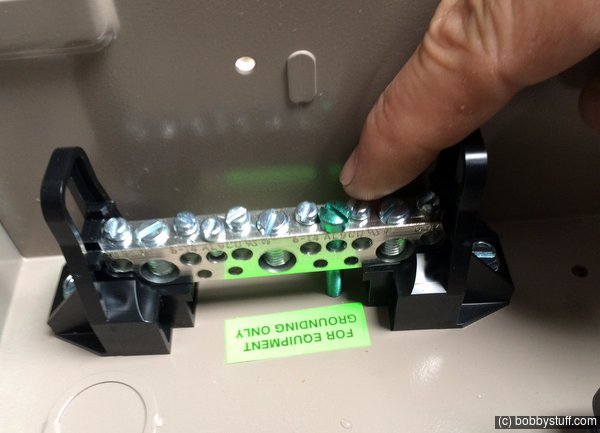
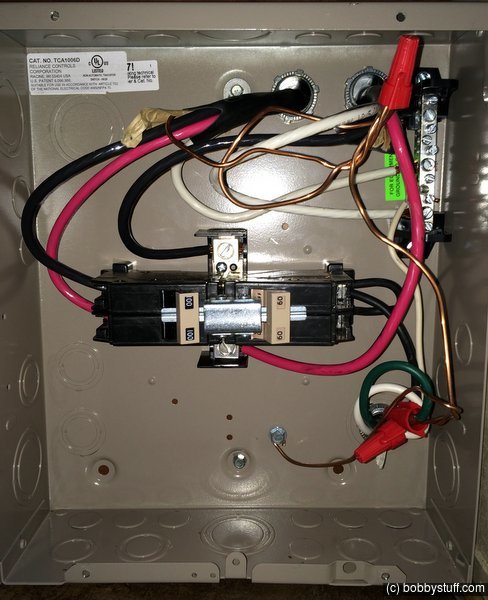
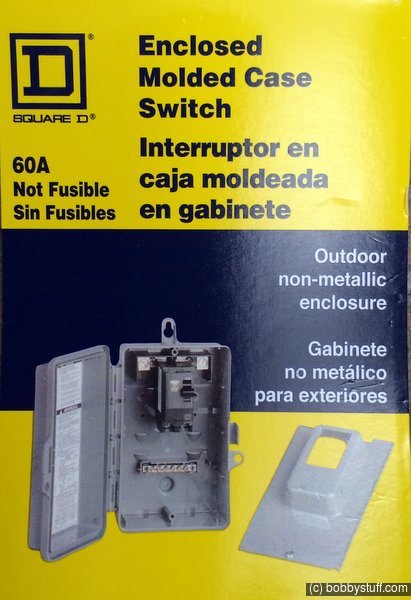
| Backup Lights |
Topics
TagsElectrical (18),Generator (7),Leaks (3),Lights (3),Springs and shackles (7),Tires (3)
